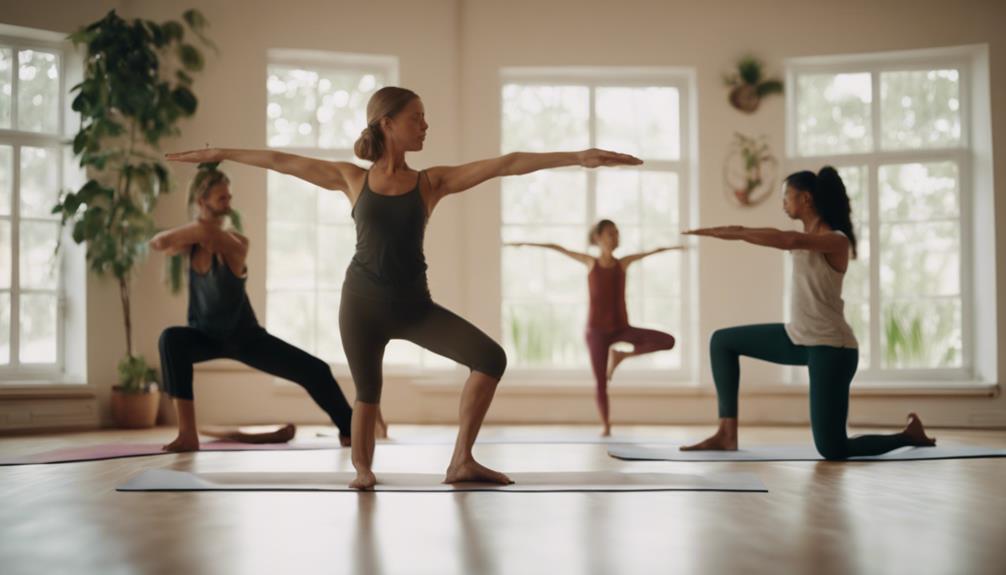What Is Best Thickness For Yoga Mat

“`html
What is the Best Thickness for Yoga Mat? A Comprehensive Guide
Choosing the right yoga mat is crucial for a successful and enjoyable practice. One of the most important factors to consider is the thickness of the yoga mat. In this article, we will explore the best thickness for yoga mats, taking into account various factors such as comfort, support, and stability. Whether you’re a seasoned yogi or a beginner, understanding the right mat thickness can significantly enhance your yoga experience.
Understanding Yoga Mat Thickness: The Basics
The thickness of a yoga mat typically ranges from about 1/16 inch (1.5 mm) to 1/2 inch (12 mm). The most common thickness options are 1/4 inch (6 mm) and 1/8 inch (3 mm). The thickness you choose can depend on several factors, including your body type, the type of yoga you practice, and your personal preferences. A thicker mat can provide more cushioning, while a thinner mat may offer better stability and balance. Understanding these basics will help guide you in selecting the best thickness for your yoga mat.Where Is Steve Ross Yoga Now
Consider Your Yoga Style: Hatha vs. Vinyasa
Your choice of yoga style can greatly influence the best thickness for your yoga mat. For instance, if you practice Hatha yoga, which is more gentle and focused on alignment, a thicker mat (around 1/4 inch) might be beneficial for added support and comfort during slower movements. Conversely, if you practice Vinyasa, which involves more dynamic movements and transitions, a thinner mat (approximately 1/8 inch) may be preferable to maintain stability and connection to the ground. By considering your yoga style, you can make a more informed decision about the ideal mat thickness.
Related Posts:
Body Type and Personal Comfort: Finding Your Ideal Mat
Your body type and personal comfort levels play a significant role in determining the best thickness for your yoga mat. Heavier individuals may benefit from a thicker mat, as it provides more cushioning for joints and can help prevent discomfort during poses that require kneeling or sitting. On the other hand, lighter individuals may find a thinner mat to be adequate, as they may not require as much cushioning. Ultimately, your comfort during practice is paramount, so it’s essential to choose a thickness that feels right for you.
Joint Support and Injury Prevention: The Importance of Thickness
One of the primary reasons to consider the thickness of your yoga mat is the support it offers to your joints. A thicker mat can alleviate pressure on your knees, wrists, and spine, which is especially important for those with pre-existing joint issues or injuries. A 1/4 inch mat provides ample cushioning while still allowing for balance and stability. Conversely, if you are injury-prone or recovering from an injury, a thicker mat can serve as a protective barrier, reducing the risk of further injury during practice.
Portability and Storage: The Trade-offs of Thickness
While thickness is a critical factor, it’s also important to consider the portability and storage of your yoga mat. Thicker mats tend to be heavier and bulkier, making them less convenient for travel or carrying to a yoga class. If you plan to practice in various locations, a thinner mat may be more suitable due to its lightweight nature. Many yogis opt for a balance between comfort and portability, such as a mat that is 1/8 inch thick, which provides decent cushioning while remaining easy to transport.
Material Matters: How Thickness Affects Durability
The material of your yoga mat can also impact how effective its thickness is. Common materials include PVC, TPE, and natural rubber, each offering different levels of durability and comfort. A thicker mat made from high-quality material tends to last longer and provide better support. For example, a 1/4 inch natural rubber mat is not only thicker but also eco-friendly and provides excellent grip, making it a popular choice among yogis. Understanding the interplay between thickness and material can help you select a durable mat that meets your needs.
Testing Different Thicknesses: Finding Your Perfect Fit
The best way to determine the ideal thickness for your yoga mat is to try out different options. Many yoga studios and retailers offer mats of varying thicknesses for students to test out during classes. Pay attention to how each thickness feels during your practice. Do you feel supported and comfortable, or do you struggle with stability? Take note of your preferences, as they will guide you in making the right choice. Remember, the perfect yoga mat thickness is ultimately one that enhances your personal practice.
Conclusion: Making an Informed Decision on Yoga Mat Thickness
In conclusion, the best thickness for a yoga mat largely depends on individual factors such as yoga style, body type, comfort levels, and personal preferences. While thicker mats provide more cushioning and joint support, thinner mats offer greater stability and are easier to transport. By understanding the importance of mat thickness and considering the various elements at play, you can make an informed decision that enhances your overall yoga experience. Whether you opt for a thicker or thinner mat, the key is to find one that allows you to practice yoga comfortably and effectively.
“`
This blog post is structured to provide valuable information on the topic while naturally incorporating the keyword phrase “what is the best thickness for yoga mat.” Each paragraph is designed to be SEO-friendly and informative, ensuring a comprehensive understanding of the subject.